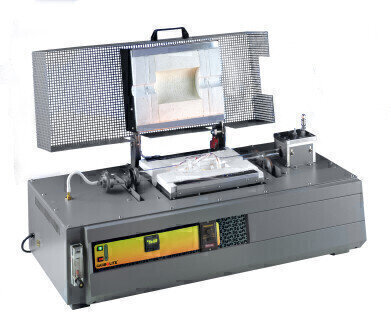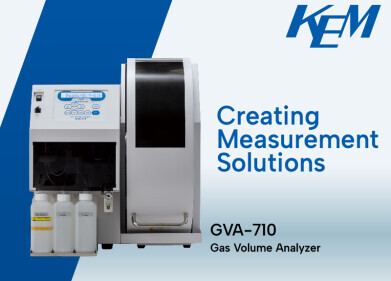Laboratory Products
Increasing interest from customers
Oct 08 2013
Carbolite is seeing increasing interest from customers in both the batch processing HTR series of Rotary Reactor Furnaces and in continuous process Rotating Tube Furnaces.
Able to heat to a maximum of 1100°C the HTR range is applied in a wide variety of applications such as the heat treatment and analysis of sulphide ores and metallurgical slags, and the controlled calcination of mineral ores and limestone.
The HTR Rotary Reactor Furnaces combine many of the advantages of fluidised bed reactors with those of a rotary kiln. In the two standard designs the sample is contained in either a 75mm x 100mm reaction chamber holding approximately 50mls or in the larger unit a 150mm x 200mm, 700ml reactor. These quartz glass vessels reciprocate backwards and forwards through an angle of 315 degrees, at up to 8 cycles per minute. Internal vanes within the reactor walls agitate the sample ensuring uniform mixing and heating throughout the whole mass.
Gas seals, a flow meter and control valve, allow an inert nitrogen atmosphere to be maintained over the sample during heating. Any exhaust gases are vented into a removable stainless steel box with a gas outlet nozzle that can be vented into a fume extraction system.
In addition to the standard designs some of the customised options that have been supplied with HTRs include replacement of the quartz glass reactors with Inconel reactors, modification for use with argon, gas safety and detection systems for use with reducing gases such as hydrogen and carbon monoxide. Horizontal parallel opening lids have also proved to be a popular alternative the standard hinged lid.
The range of applications and options for Carbolite Rotating Tube Furnaces is even greater. Carbolite routinely builds Rotating Tube Furnaces for use up to 1600°C. Instead of the batch processing ability of the HTR, Rotating Rube Furnaces provide the capability to continuously process samples or even production quantities of material. Depending upon the physical nature and flow characteristics of the material being heated samples can be fed into the furnace using vibratory feeders or screw feeders or combinations of the two. If required designs are available to introduce, process and collect materials under modified atmospheric conditions. The residence time of the sample in the furnace is controlled by the angle of inclination, the speed of rotation and if required the presence of augers or agitation vanes within the tube itself. Thermocouples may be inserted along the rotational axis to precisely measure the load temperature and control systems range from the most basic through to fully fledged PLC (Process Logic Control) systems.
The continuous agitation of the sample as it passes through the tube has enabled manufactures of highly advanced ceramics and catalytic materials along with many others to greatly reduce the process times that are required for batch processing of materials in conventional chamber furnaces.
Digital Edition
Lab Asia 31.2 April 2024
April 2024
In This Edition Chromatography Articles - Approaches to troubleshooting an SPE method for the analysis of oligonucleotides (pt i) - High-precision liquid flow processes demand full fluidic c...
View all digital editions
Events
Apr 22 2024 Marrakech, Morroco
Making Pharmaceuticals Exhibition & Conference
Apr 23 2024 Coventry, UK
Apr 23 2024 Kintex, South Korea
Apr 23 2024 Seoul, South Korea
Apr 24 2024 Jakarta, Indonesia


.jpg)

.jpg)













